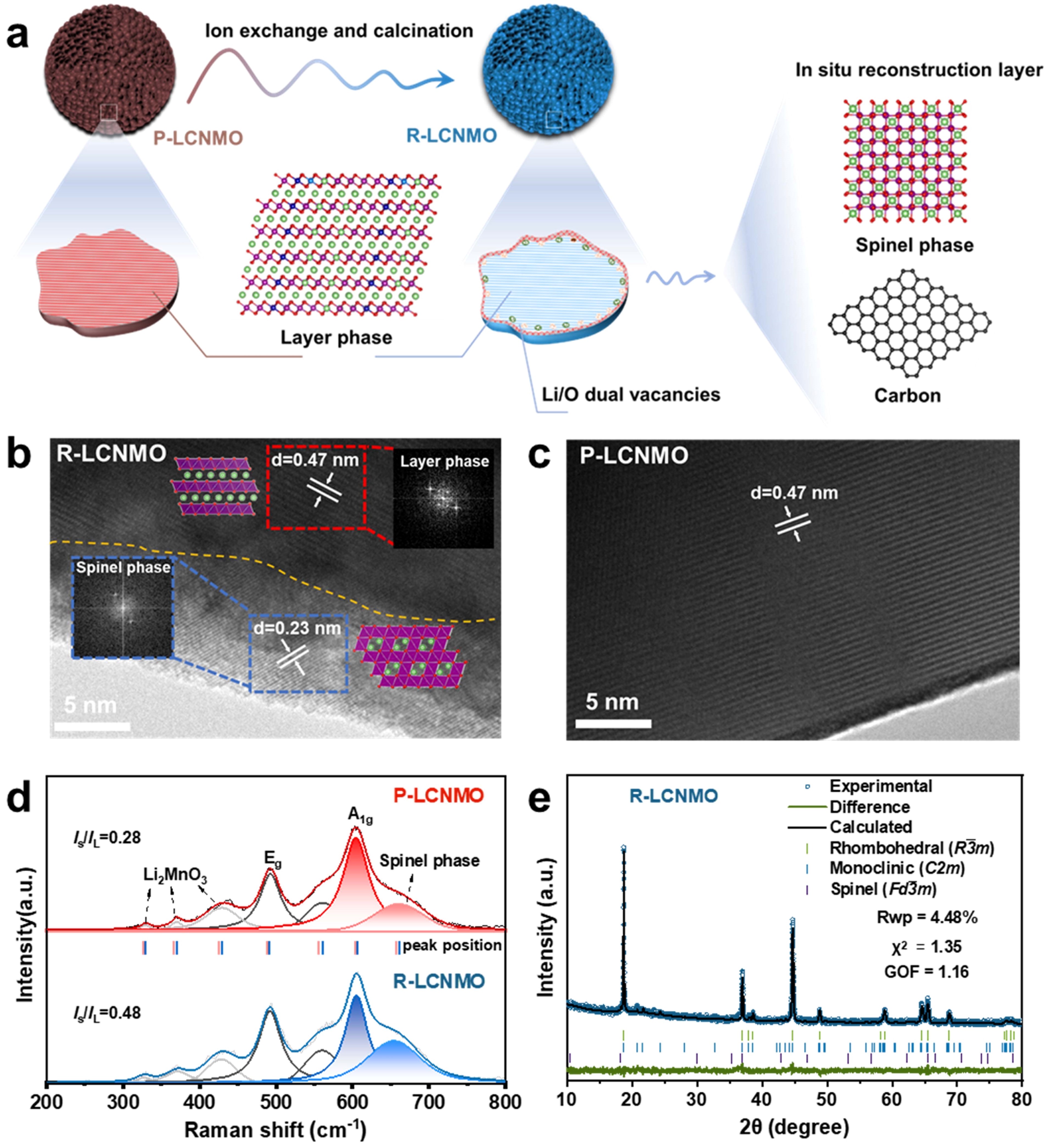Y.G. Ouyang, Y. Zhang, G.R. Wang*, X.F. Wei, A.P. Zhang, J.W. Sun, S.Q. Wei, L. Song, F.N. Dai* and Z.-S. Wu *
Advanced Functional Materials, 2024, Accepted.

Li-rich cathode materials (LRMs) are regarded as the key cathode candidates for next-generation lithium-ion batteries because of their high specific capacity and environmental friendliness. However, LRMs encounter poor cyclability and low initial coulombic efficiency (ICE) hindering their practical application. Herein, we propose a general near-surface in-situ reconstruction strategy of constructing the Li/O dual vacancies and spinel-carbon dual coating layers on the surface of LRMs concurrently to improve Li+ storage performance. The as-prepared LRMs exhibit a greatly strengthened specific capacity of 283 mAh g−1 with an enhanced ICE of 94% and long-term cyclability of 91% retention after 200 cycles compared with the pristine LRMs (212 mAh g−1 with an ICE of 65%, 76% retention after 200 cycles). Furthermore, it is theoretically revealed that O vacancies (Ov) prefer to occur at the interface of the C2/m and R3 ̅m phases to mitigate lattice stress, rather the O sites in individual C2/m or R3 ̅m phase with more coordinated atoms. Besides, Li ions exhibit lower migration energy from C2/m phase to R3 ̅m phase with the Ov located at the lattice interface. Therefore, this strategy opens a new avenue in the design perspective of the LRMs’ near-surface for high-energy-density lithium-ion batteries.
